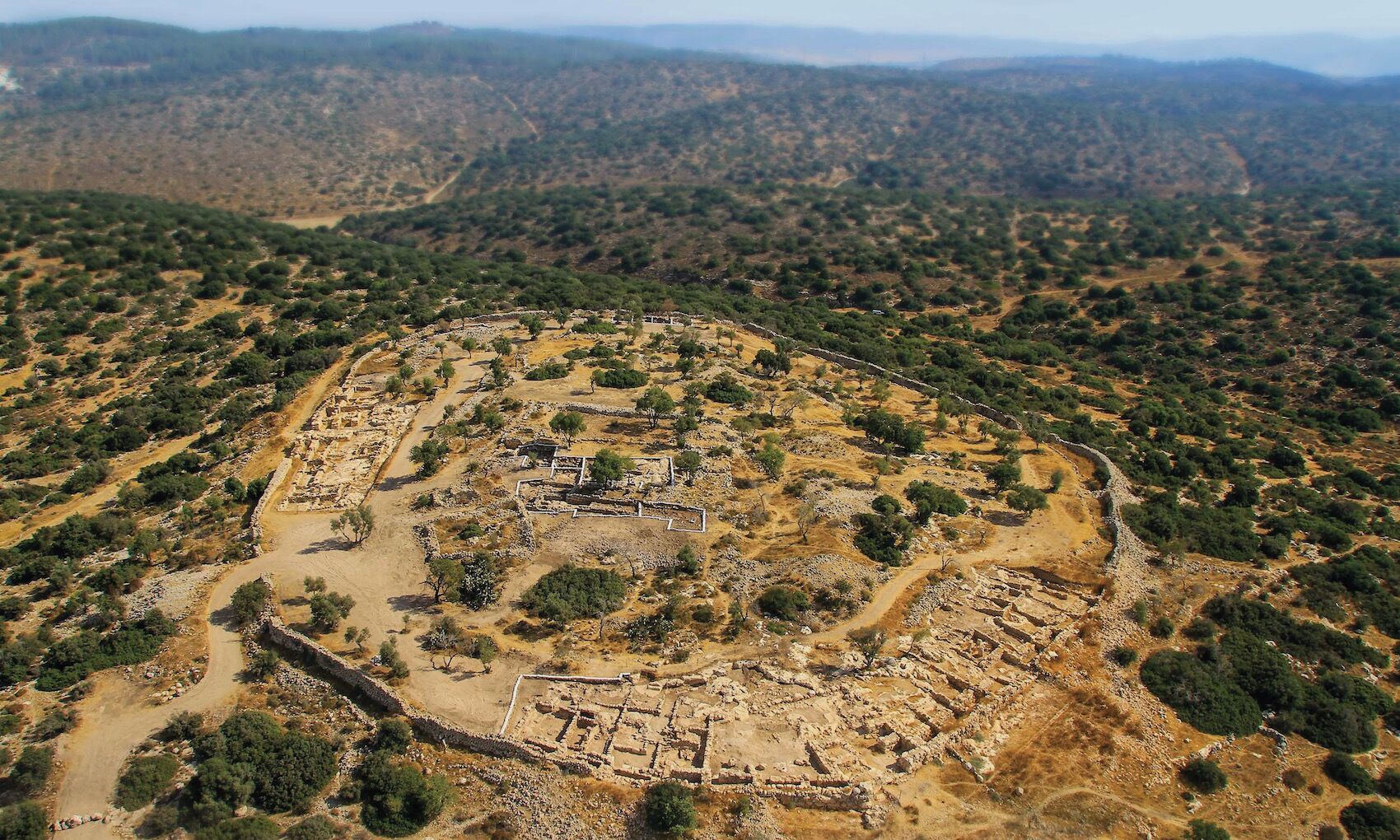Khirbet Qeiyafa is an extremely unique site in Israel. Unlike most other ancient Israelite cities that have been excavated, this site is relatively “easy” to excavate because it has only one principal layer of settlement (contrasted against Megiddo’s 26, for example). Essentially everything at the site is from the same time period (aside from a few later and less-extensive additions).
Khirbet Qeiyafa has not definitively been linked with a specific city in the Bible (hence the commonly used Arabic name). There are a handful of candidates, as this article will describe. However, this special site, inhabited for only a few decades, does go a long way in establishing the context of the earliest (and much debated) years of the kingdom of Israel during the time of King David himself. Khirbet Qeiyafa, thanks to its firm dating, can be used as a benchmark site against which other archaeological sites and finds can be compared.
Philistine or Israelite?
Khirbet Qeiyafa is a large fortified mound situated about 32 kilometers (20 miles) southwest of Jerusalem. The city stood directly between the geographic boundaries of Israelite and Philistine land, overlooking the Elah Valley, where the battle between David and Goliath occurred (1 Samuel 17:2). The fortress was established in a contested region, which raises the question of ownership.
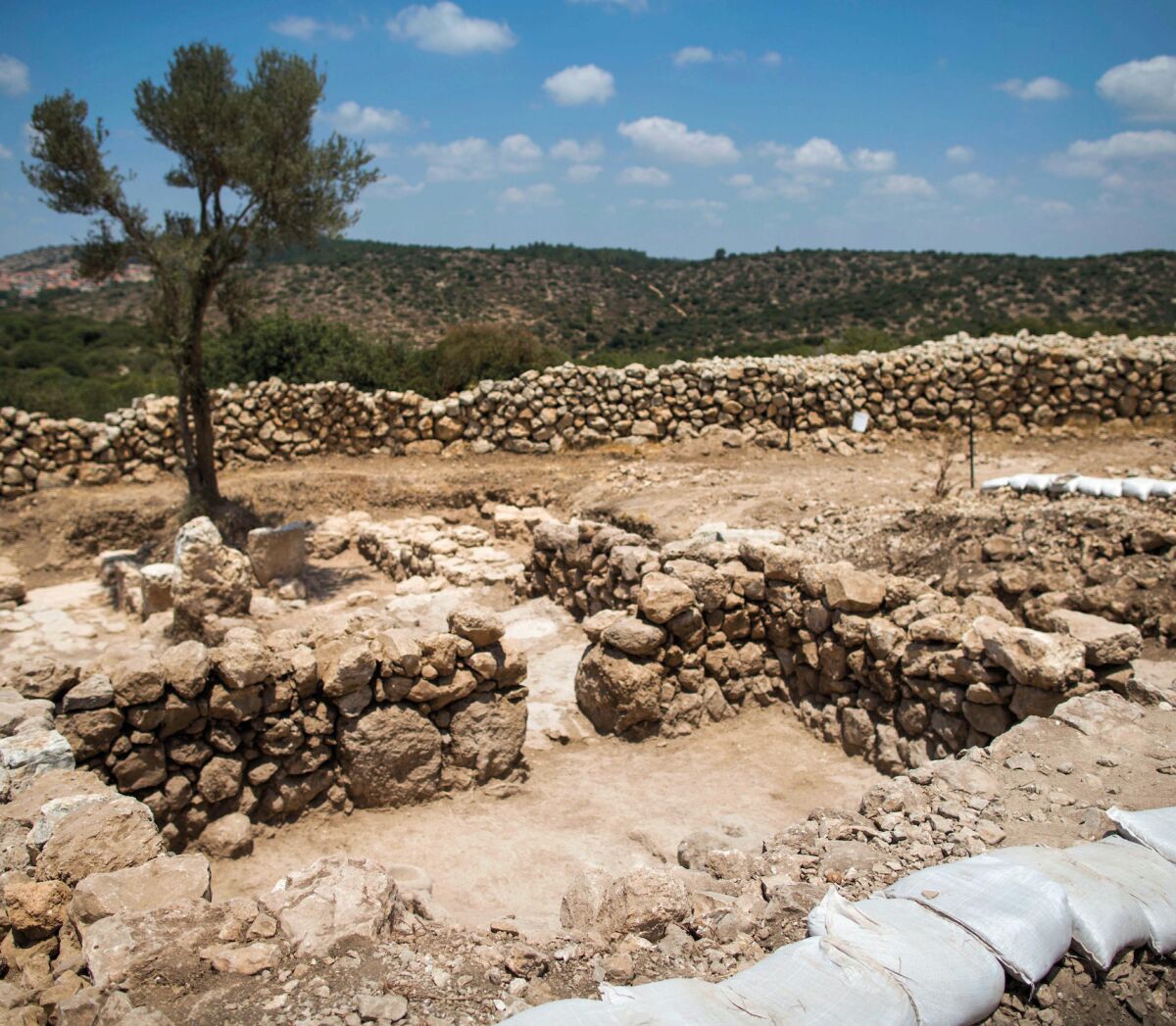
Minimalists claim that Israel was small and lacked a centralized government at the time this city was built and was therefore incapable of establishing a monumental fortress. They assert that Khirbet Qeiyafa must have been built by the Philistines or some other culture, but certainly not Israel. Bible traditionalists accept the biblical and historical view and believe Israel was capable of producing a sizable, well-planned city.
To the traditionalists, the question remains: Was this an Israelite or Philistine site?
Several pieces of evidence answer this question.
The first revolves around the discovery of thousands of animal bones. Analysis of the bones provided an important revelation: None of the bones belonged to pigs. It is common in the excavation of Philistine and Canaanite cities (especially the former) to uncover pig bones. Pigs were used as food and probably as sacrifices as well. If Khirbet Qeiyafa was a Philistine city, the absence of pig bones makes it an anomaly. On the other hand, the absence of pig bones is totally consistent with other Judahite sites, where little to no pig remains are found.
Second, evidence of Qeiyafa’s Israelite origins came in the form of linguistic evidence, most notably a large pottery sherd, or ostracon, covered in ancient script. Experts identified the script as an early Hebrew precursor. (See Israelite Literacy in the 10th Century B.C.E. for more information.)
Third, structural evidence showed that the houses at Khirbet Qeiyafa were built abutting the city wall in what is known as a casemate plan. Casemate urban planning is not found in Philistine or Canaanite cities. It is, on the other hand, a known feature of Judahite cities.
Fourth, unlike most Philistine and Canaanite cities, Khirbet Qeiyafa has no central location of cult worship. There is no city center where idols were placed and worshiped. The site also had a noticeable lack of idols. This too is unusual for Philistine sites but entirely consistent with what we would expect of a Judahite city.
Finally, a number of olive pits excavated from Khirbet Qeiyafa were carbon-14 dated. The analysis returned a date range of around 1020 to 980 b.c.e., directly within the biblical chronology of kings Saul and David. The evidence at Khirbet Qeiyafa, then, suggests it being a Judahite site.
Qeiyafa’s Biblical Identity
Is Khirbet Qeiyafa mentioned in the Bible? Possibilities have been presented. One is Adithaim, mentioned in Joshua 15:36. This speculation is based on the cities listed in this verse following a precise geographic order. Considering the location of other cities listed in this chapter, Khirbet Qeiyafa could be Adithaim.
Another possibility is Netaim. This city is referenced poorly in most English-language Bibles: “These were the potters, and those that dwelt among plantations and hedges; there they dwelt occupied in the king’s work” (1 Chronicles 4:23). The word “plantations” is actually the name of a city, Netaim. And the word “hedges” refers to the city Gederah. Based on Khirbet Qeiyafa’s proximity to Gederah (these cities being near the Valley of Elah), some speculate that it could be Netaim.
The more commonly accepted biblical name is the one accepted by the site’s excavator, Professor Garfinkel: Shaaraim. The word Shaaraim means “two gates.” And Khirbet Qeiyafa has the distinction of being the only known Iron ii city equipped with two gates.
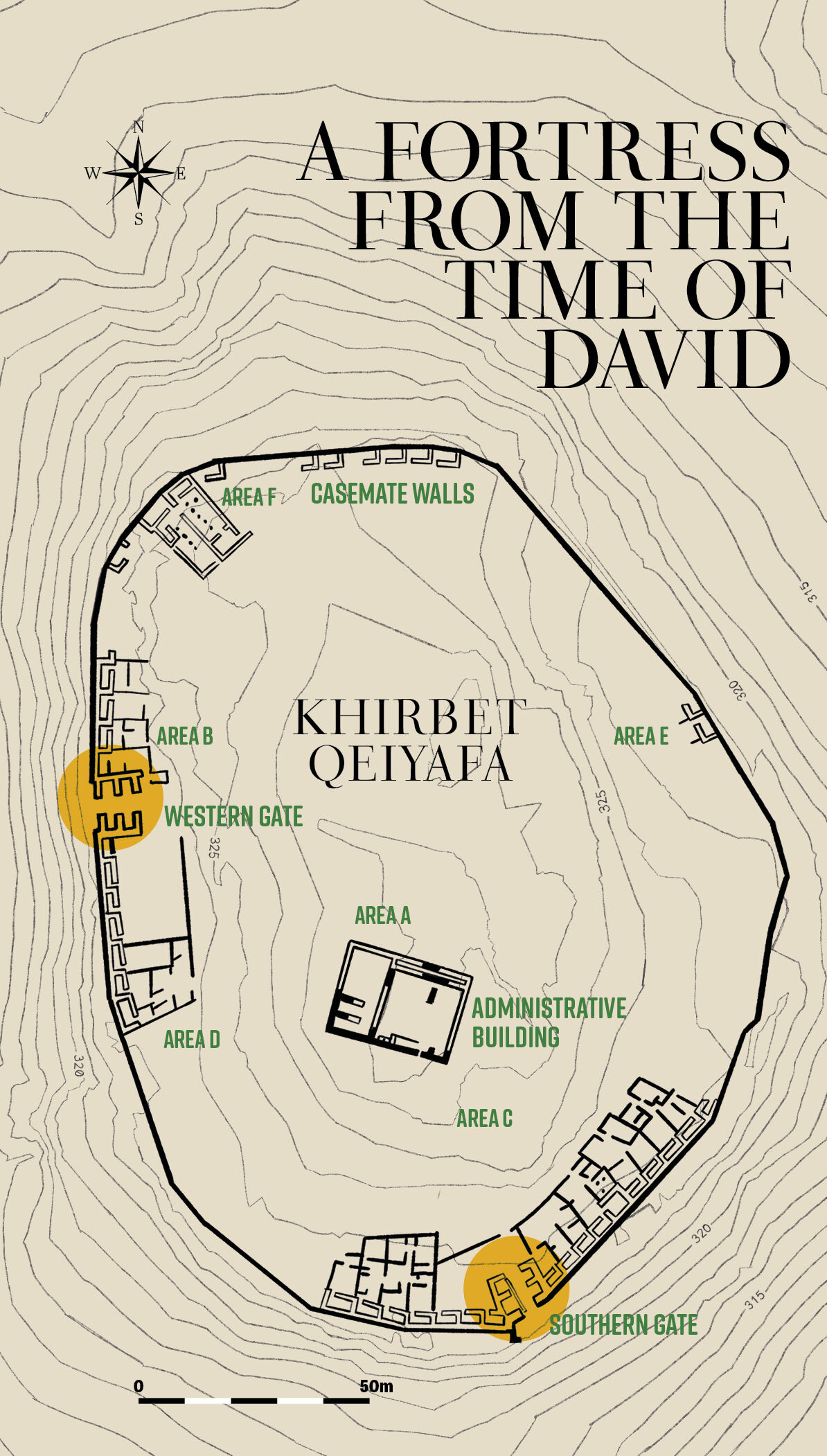
Typical fortress cities had only one gate, since the entry and exit point is the weakest part of the installation. Yet Khirbet Qeiyafa has two identical, large, four-chambered gates—one on the south and one on the west. The reason is unclear, but this city certainly matches the name “two gates.”
Shaaraim is mentioned in a few Bible verses, all in early contexts (thus corresponding to the early inhabitation of Khirbet Qeiyafa). It is also mentioned alongside the city of Adithaim in the list of cities discussed in Joshua 15:36, showing Shaaraim was located in the same geographic area.
This city is also referenced in 1 Samuel 17:52, which describes the aftermath of David’s battle with Goliath: “And the men of Israel and of Judah arose, and shouted, and pursued the Philistines, until thou comest to Gai, and to the gates of Ekron. And the wounded of the Philistines fell down by the way to Shaaraim, even unto Gath, and unto Ekron.”
Khirbet Qeiyafa directly overlooks the Valley of Elah, where the battle between David and Goliath (and the ensuing defeat of the Philistine army) took place. Thus, both the time frame and location fit for identifying Khirbet Qeiyafa as Shaaraim.
Another verse provides an interesting possible reference to this city. It comes earlier in the story of David and Goliath. Verse 20 records David arriving with supplies for his brothers, who were part of the Israelite army: “And David rose up early in the morning … and took, and went, as Jesse had commanded him; and he came to the barricade, as the host which was going forth to the fight shouted for the battle.”
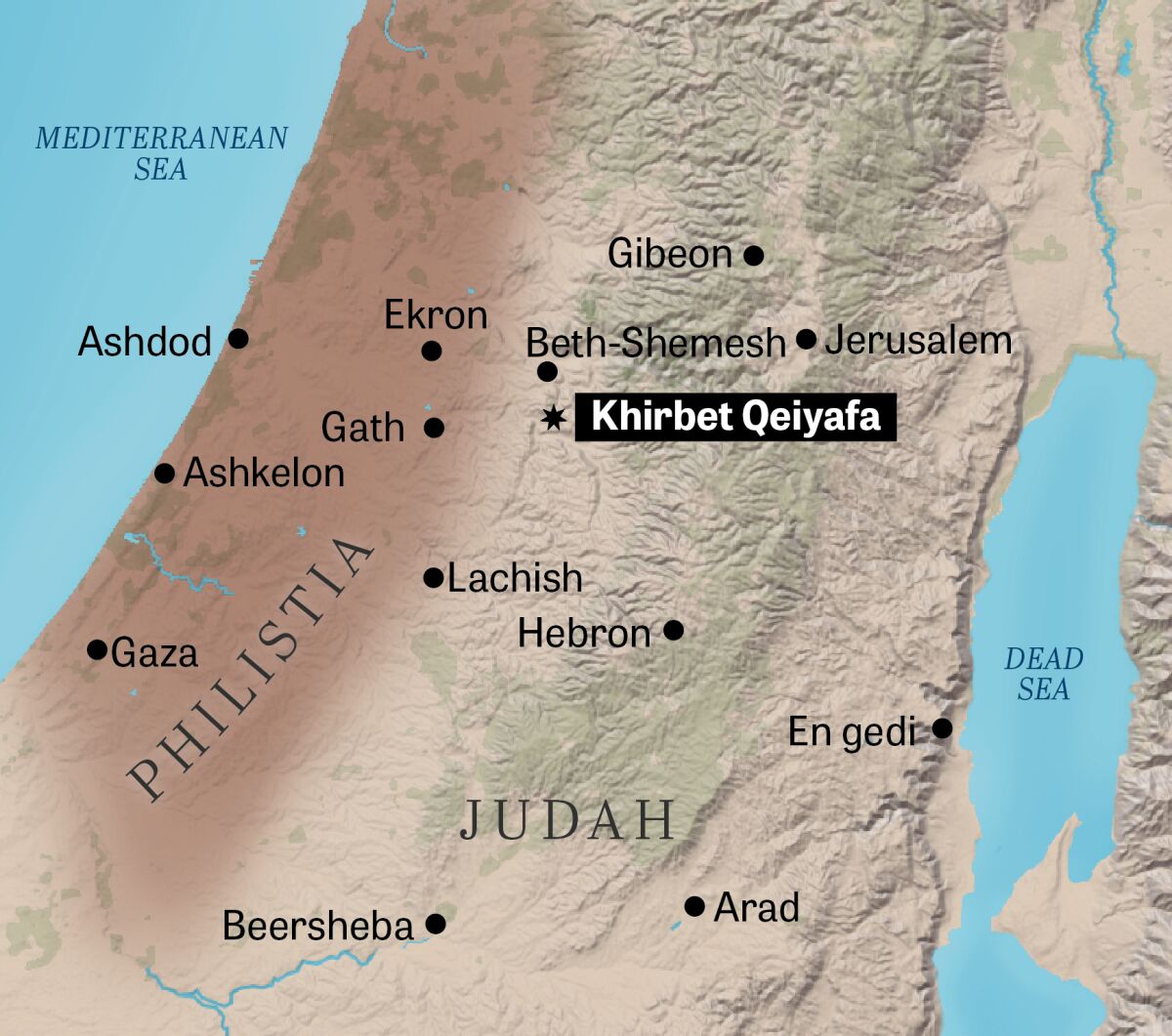
The word for “barricade” (“trench” in the kjv), magal, can mean a circular rampart. The excavations at Khirbet Qeiyafa clearly reveal a circular rampart fortress. Is it possible that David visited his brothers at this circular fortress?
One more reference to Shaaraim appears in the book of Chronicles: “And Shimei had sixteen sons and six daughters; but his brethren had not many children …. And they dwelt at … Beth-marcaboth, and Hazar-susim, and at Beth-biri, and at Shaaraim. These were their cities unto the reign of David” (1 Chronicles 4:27-31).
This passage specifically links Shaaraim to the time of David’s rule. Verse 31 says Shaaraim was populated by Shimei’s family until the reign of David. Judging by this verse and the verses above, we see that if Khirbet Qeiyafa really was biblical Shaaraim, it was established as at least a strategic location before David even became king, yet completely fell out of view not long afterward—a good match for the carbon-14 data.
The Discoveries
Khirbet Qeiyafa is a relatively new site to excavators. While its existence has been known to archaeologists and surveyors since the late 1800s, it was not considered significant. Only within the last 20 years have archaeologists begun to note in more detail the intriguing structure of the ancient fortress. Thus excavations began in 2007 and have since yielded numerous intriguing finds.
One of the most dramatic finds is a large sherd of pottery that bears five lines of proto-Hebrew text. The suggested translation of this ostracon reads strikingly similar to the biblical record of King Saul’s appointment (1 Samuel 8:11-19). This could support the view that Khirbet Qeiyafa was a functioning Israelite fortress at the establishment of the kingdom of Israel.
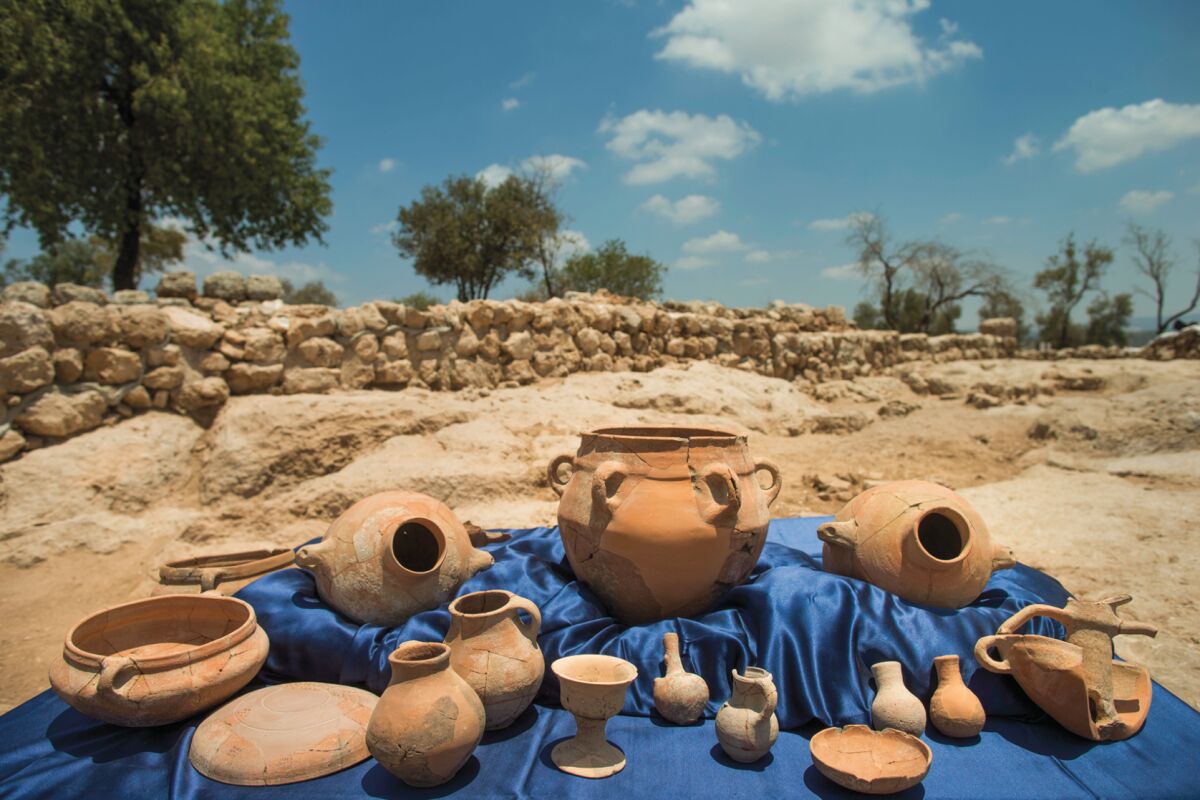
The presence of writing is significant. Khirbet Qeiyafa shows not just a strong early Israelite presence, but one that used writing—a vital necessity for operating a kingdom.
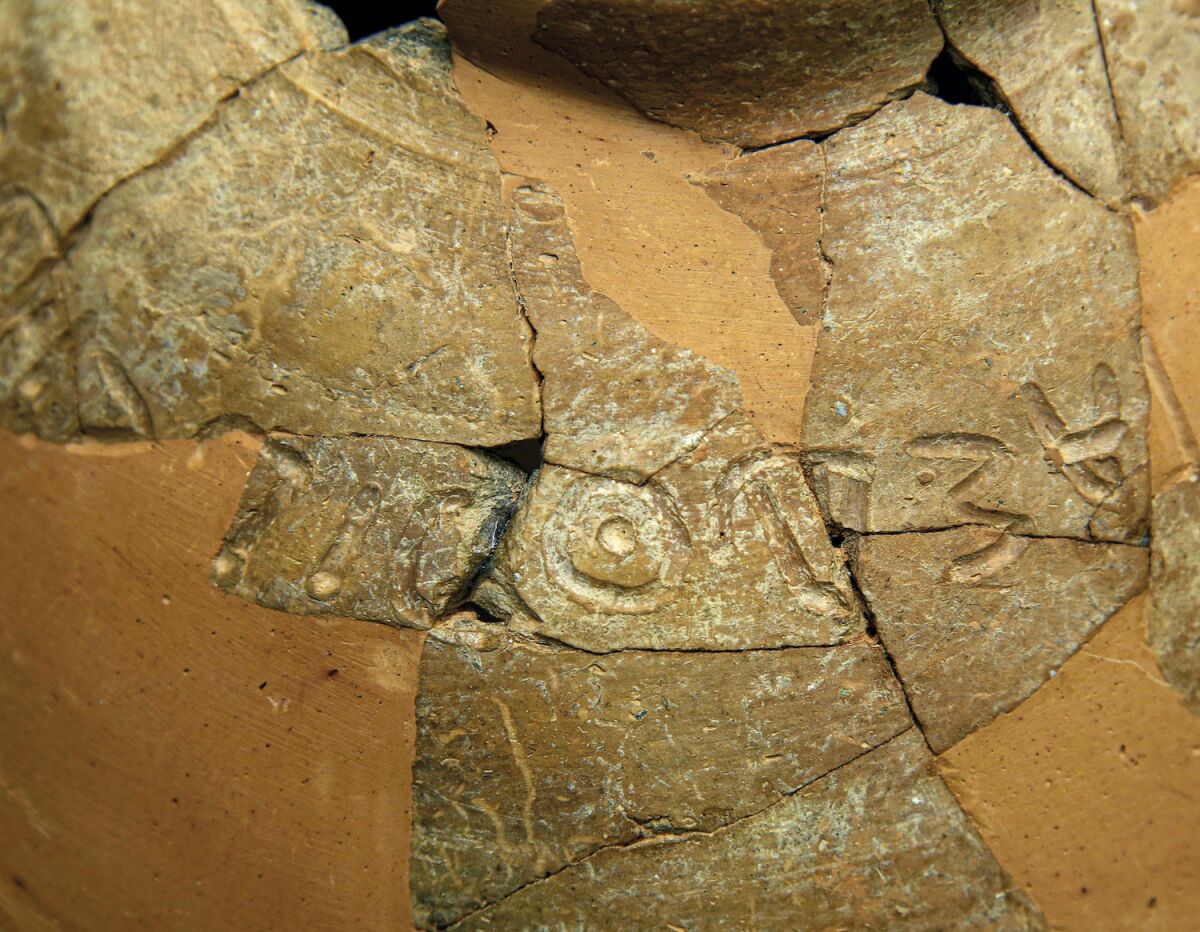
Khirbet Qeiyafa also yielded another interesting inscription on a storage jar. This inscription bears the words “Ishbaal, son of Beda.” Saul had a son by this name (1 Chronicles 8:33). This inscription confirms the use of the name during the same period. During later periods in Israel’s history, names that include “Baal” fell out of use.
Additional interesting finds from Khirbet Qeiyafa include two medium-size portable “box” shrine-like objects, one of clay and one of stone. Their design features have been compared to descriptions in the Bible of Solomon’s 10th-century temple and palace in Jerusalem.
On the stone model are triple-recessed doorposts. 1 Kings 7:4-5 describe Solomon using this style of architecture for his palatial building near the temple (and he likely used the same technique for the temple itself). Further, the Mishnah (Middoth 3, 7) shows that the doorframe of Herod’s temple was built in the same manner as shown on this model.
The model door opening is 20 centimeters (8 inches) tall by 10 centimeters (4 inches) wide. The Mishnah describes the second temple as having a door 40 amah tall by 20 amah wide—the same proportions (Middoth 4, 1; it is important to note that much of the design of the second temple was influenced by the first).
The model has seven protruding “squares” beneath the roof. Each square is divided by two lines, into three small rectangles. It is clear that these are meant to represent the ends of wooden crossbeams supporting the roof. (For more information on this design feature, see Triglyphs: Another New Style of Monumental Architecture.)
In addition to these other discoveries, archaeologists have uncovered a large palatial structure at the center of Khirbet Qeiyafa. This is probably where the governor lived. The city itself is believed to have housed 500 to 600 people within its fortified walls, some of the stones of which weighed as much as 8 tons.
Khirbet Qeiyafa Today
Archaeologists don’t know why Khirbet Qeiyafa was abandoned so early in the kingdom of Israel’s history. Perhaps it was no longer needed as a deterrent against the Philistines after King David eliminated them as a threat and once Solomon began his long and peaceful reign.
Khirbet Qeiyafa was somewhat reused on and off after the kingdom of Judah was conquered by Babylon in the sixth century b.c.e., generally as an agricultural area. The site includes a couple of instances of isolated building projects, within a late-Persian/early-Hellenistic time frame, as well as during the Byzantine period. Yet the city-fortress never returned to the glory it experienced during the early 10th century under King David.
Much archaeological work remains to be done at this unique site. While a wealth of discoveries have already been found, only an estimated 20 percent of the mound has been excavated. So while debates and arguments abound regarding the veracity of the biblical account of the kingdom of Israel under Saul and David, the history uncovered at Khirbet Qeiyafa remains a witness, just as it did more than 3,000 years ago—as it looked out over the Valley of Elah, where a young man, full of faith and sling in hand, approached a giant.
